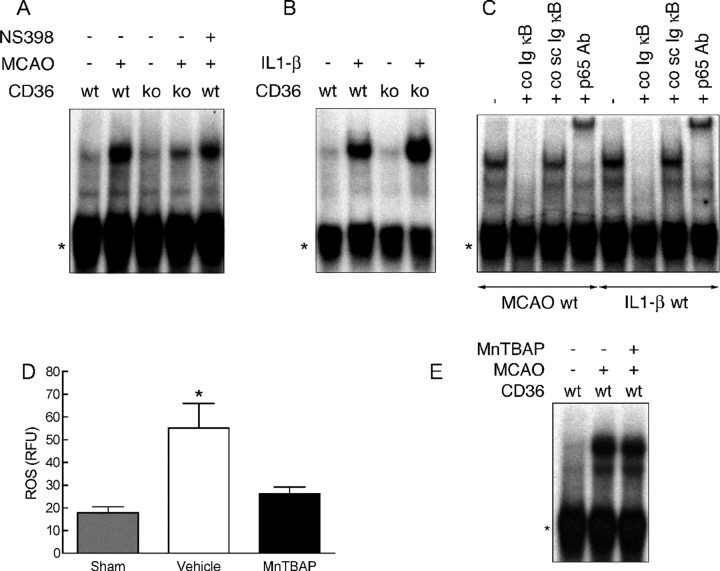Figure 7.
EMSA in CD36+/+ and −/− mice. A, NF-κB binding activity in CD36+/+ (wt) and −/− (ko) mice with and without MCA occlusion (MCAO) and treatment with NS398. B, NF-κB binding activity in wt and ko with and without intracerebroventricular injection of IL-1β. C, NF-κB binding activity in CD36+/+ mice with MCAO or intracerebroventricular injection of IL-1β. The signal is eliminated by addition of unlabeled sense oligonucleotide (co Ig κB) but not by unlabeled scrambled oligonucleotide (co sc Ig κB), indicating specificity of the reaction. Treatment with p65 antibodies (p65 Ab) leads to a band shift, demonstrating the presence of p65 in the NF-κB complex. The asterisks indicate nonspecific binding activity. Data are representative of four independent experiments. D, ROS production assessed using hydroethidine fluoromicrography 4 h after MCAO. The ROS scavenger MnTBAP blocks postischemic ROS production (p > 0.05 from sham; p < 0.05 from vehicle). *p < 0.05 from sham; ANOVA and Newman–Keuls test; n = 5 per group. E, NF-κB binding activity in wt mice, with or without MCAO, treated with vehicle or MnTBAP intracerebroventricularly. Data are representative of three independent experiments.

